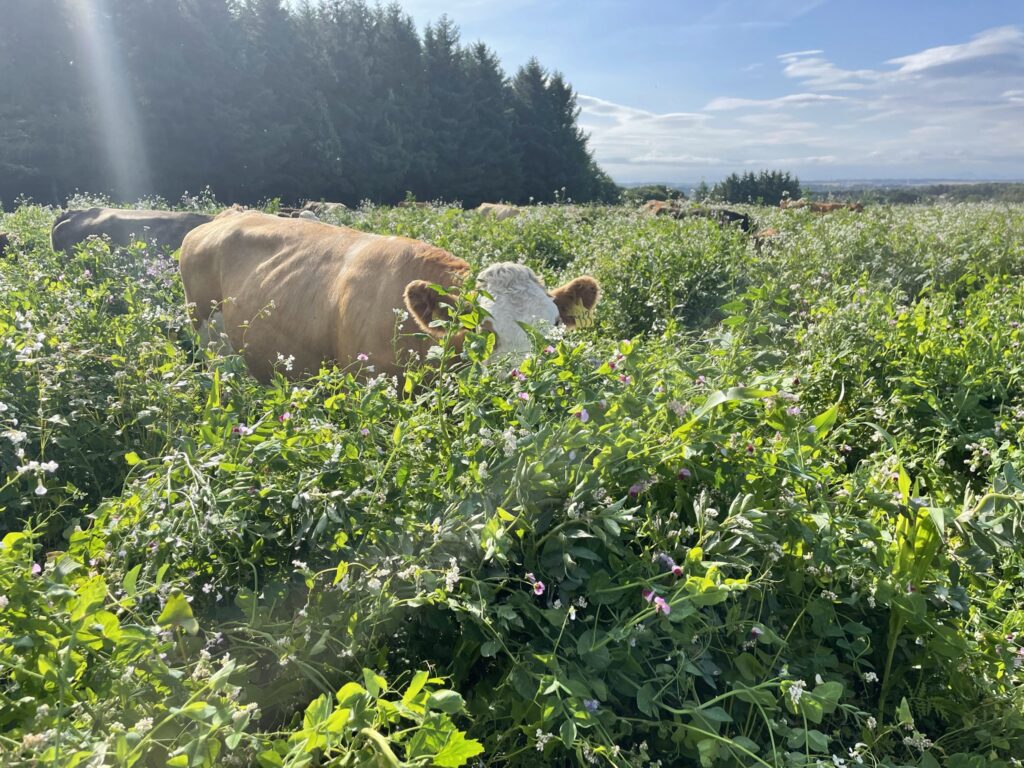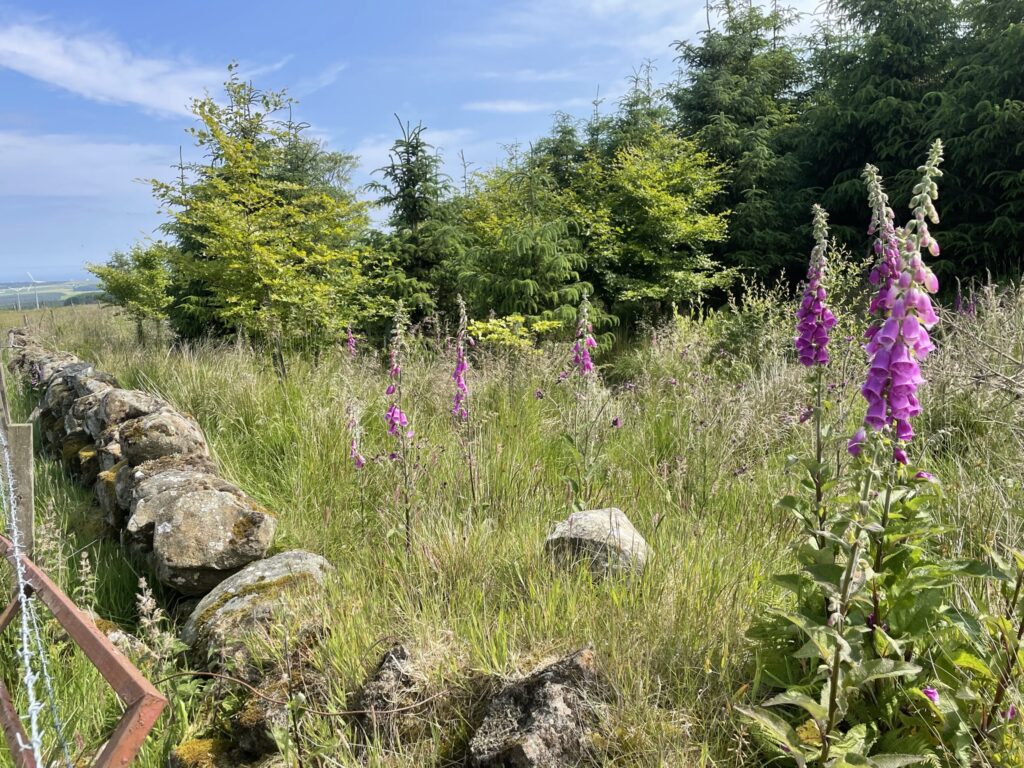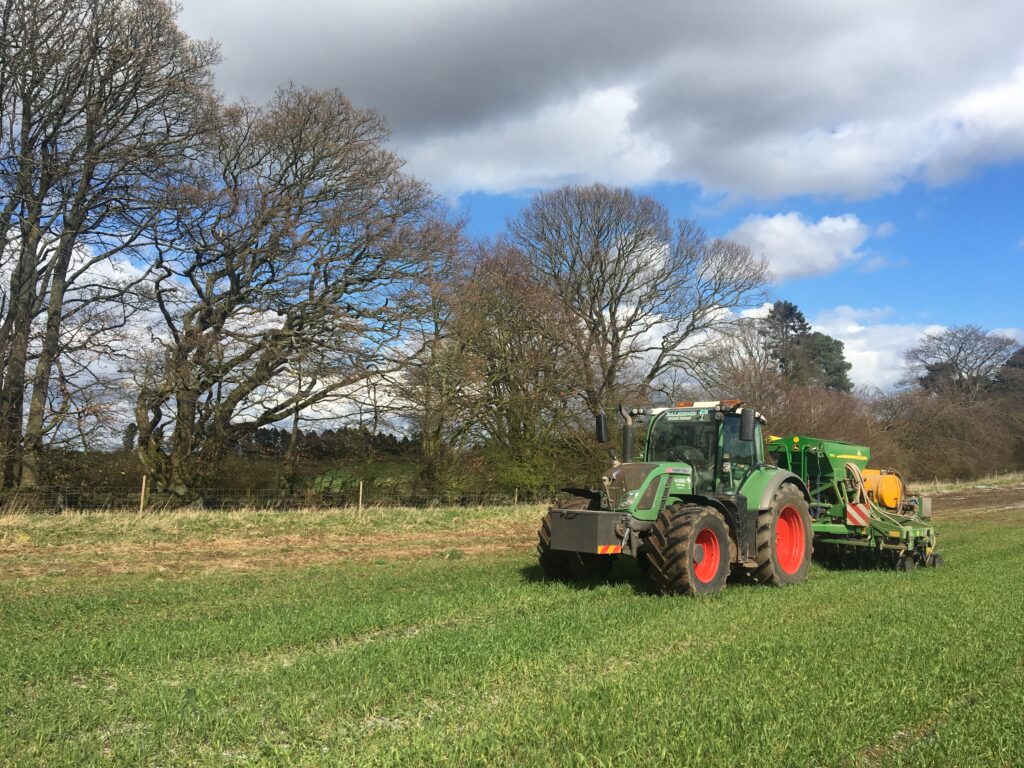Johnnie Balfour, Balbirnie Home Farms 2/3
At the edge of the bog there is some almost grazing land, but we’ve yet to get cattle there even in a dry summer. We hope to do so, encouraged by Nature Scotland to get cattle in there to reap the benefits of ruminant grazing. In the bog, there are ponds full of aquatic life. My understanding of identification is growing, so right now, all I know is that there is lots of it!
We were very fortunate to get money from the Nature Recovery Fund from Nature Scotland last year and we used it to plant 6.5 km of hedgerow. For historic reasons, some of our fields don’t have proper margins around them and they were left out when folk were planting trees as wind breaks.
As a result, we’ve tried to link up the woods with a burn that flows through the farm and links to the SSSI. There is now a wildlife corridor going throughout our best arable land. It’s incredibly windy, so it made sense to plant a native hedgerow of field maple, gelder rose, wild cherry and hawthorn. It’s been planted for 3 months and is a 4 metre wide wildlife corridor strip that’s 6.5km long! We will be happy with whatever it is that grows upwards in the hedge.

Pasture at Balbirnie Home Farms
What you do to encourage this biodiversity and the lessons you have learned/would like to share?
Planting hedgerows, winter and summer cover crops are all encouraging biodiversity. The bog is left alone except for a footpath. Many of our fields have 6m margins around them that is wild, but we don’t take money for those because it wouldn’t work for our business, we need flexibility. We’ve also left the margins on the North sides of woods and strips that are full of wildlife. When we’ve added it up, it comes to over 100 ha that is for nature.
More is better in terms of biodiversity and we’re not by any stretch of the imagination where we want to be and we are still using too many synthetic products on too much of the ground, and of course their use kills something and we know that’s not what we want. So we’re changing our practices by using sheep to keep crops clean and biological additives to make them as healthy as possible to fight off disease. Success is yet to be measured but the soil has a lot of life in it and we hope to reduce our synthetic inputs to zero one day. For now we are remaining flexible with every tool in the box.
On the pasture side, we don’t put anything on grazing land, it is our management that has changed. The big lesson is the pasture management with livestock which has had a very positive impact on production and diversity, by grazing in short periods with long rest periods in between.

Encouraging biodiversity
How it is connected across the farm and beyond
Beyond, there is a lot going on. In the county, there are plenty of people who are doing great things and whom we talk to about land management regularly.
One of our nearest neighbours is the town of Glenrothes so linking to farmland is not possible on that side. On the other sides are some intensive veg growers and other mixed farms too. We have good relationships with many of these businesses and exchange ideas about how to make soils more resilient.
We work hard with veg growers who rent our own ground and encourage them to manage our land as we want them to. We work with them to gradually move their practices towards less tillage. One of the biggest killers of diversity below ground is tillage and we don’t need as much. Received wisdom is that intensive cultivations and raised beds are needed to grow brassicas. The plant doesn’t know that it’s in a bed so I think we can do better.

More towards less tillage
The benefits to the farm
The primary one is fewer chemicals. More biodiversity means more resilience, more water holding capacity in soil, more plants and animals that can do more jobs for you than before. We will be planting an agro orchard – 1500 fruit and nut trees – in 15 avenues, 40m apart, in a 40 hectare block. We’re going to get 4m beetle bank strips with 36m between strips to harbour all pests and predators in the strips.
You could say we’re using the 3D space above to grow something we can produce, 2 dozen kinds of apple trees, a handful of plums, pears, damsons, cherries and hazels.
The crop from some of the trees is uncertain so how does that stack up economically? It’s impossible to work out what will grow and how without having done it already, so we see this as an experiment. We’ve accepted the cost of the trees is going to be a sunk cost in the business and we’ll see what we can get back.
We don’t know how crops will be impacted but this summer we will undersow a multi-species ley into the spring barley. We’ll harvest it and leave behind the ley. Next summer, the cattle will graze up and down the alleys whilst we protect the trees.
We know if we have a ley we don’t need to put anything on it to help it to grow. Nothing will be sprayed and the economics of the ley going in will be covered by some extra cattle who will graze there.
Kale, radish and cabbage were there last summer and so when the person who rented the field left, we let sheep into it to eat the lot!



